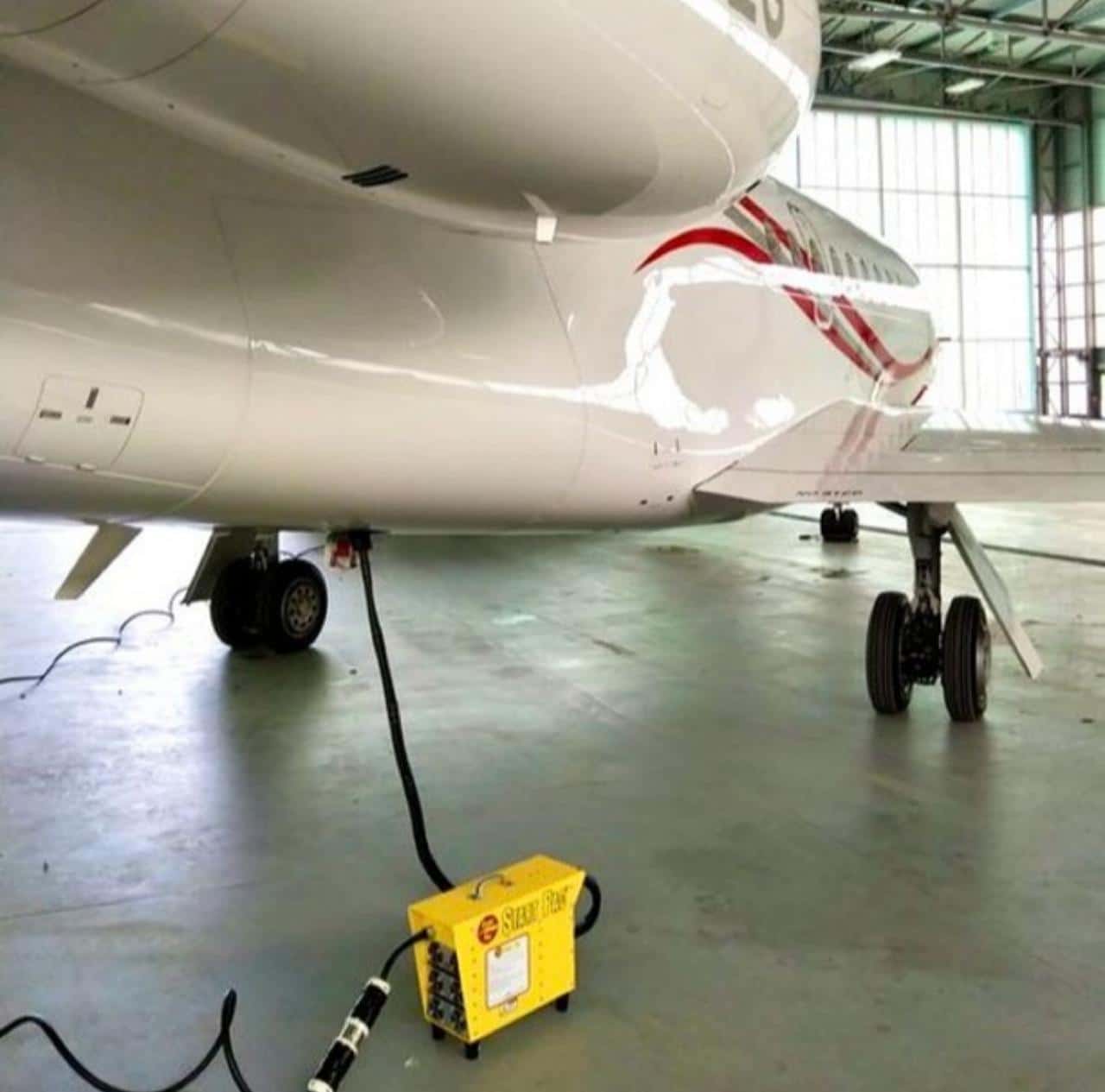
What Is The Difference Between APU Vs GPU in Aviation?
Envision the thrill as you step onto an aircraft, with growing anticipation for the adventure that awaits. However, before the powerful engines come to life and propel you towards the sky, a crucial procedure takes place behind the scenes: initiating the aircraft’s power systems.
In this complex choreography, two essential participants are involved – the Auxiliary Power Unit (APU) and the Ground Power Unit (GPU). Gaining a comprehensive understanding of their individual responsibilities is vital for recognizing the intricate network that ensures the safety and efficiency of our flights.
Auxiliary Power Unit (APU)
Picture the APU as a miniature power source unique to the aircraft – as its name says, it’s literally an aircraft auxiliary power unit. Tucked inconspicuously, typically within the tail section, this compact jet motor activates when the primary engines are inactive.
Definition and Purpose
Here is a breakdown of the responsibilities of the APU:
- Supplying electrical power: The APU is responsible for delivering crucial electrical power to the aircraft’s nervous system, which powers essential systems such as navigation, communication equipment, and instruments.
- Airborne air conditioning: By generating bleed air, a high-pressure stream, the APU serves various purposes. This includes starting the main engines by providing the necessary momentum to get them up and running.
- Cabin air conditioning: Whether during ground operations or at high altitudes, the bleed air generated by the APU is utilized to regulate cabin temperature, ensuring a comfortable journey for passengers.
- Emergency backup: In rare instances of an engine failure during flight, the APU can serve as a backup power source. It supplies crucial electricity to maintain essential systems and ensure their operation.
Ground Power Unit (GPU)
Positioned strategically throughout ports, the aircraft ground power unit serves as a massive external power source, providing electricity to aircraft while they are grounded. This self-contained device acts as an outlet for supplying power.
Definition and Purpose
The primary role of the GPU is to supply power to multiple systems: It serves as a temporary source of electrical energy, enabling the operation of various aircraft systems such as lighting, instruments, and the crucial air conditioning system.
If you would like to learn more about the amazing world of Ground Power Units, please do not hesitate to contact us!
Differences in Operation
Now, let’s take a closer look at the main differences between APU vs GPU:
APU as Onboard Power Source
The primary differentiation between the APU vs GPU resides in their power source. The auxiliary power unit functions as an autonomous unit, akin to a compact jet engine that employs jet fuel for generating electricity and producing air flow. This grants it autonomy and easy accessibility whenever required.
GPU as External Power Source
In contrast, the GPU depends on the primary electrical network as its power source. Although this arrangement is convenient and easily accessible, it necessitates a physical connection between the aircraft and the unit through cables, thereby restricting its mobility.
Benefits and Limitations
In circumstances where the aircraft is not within reach of an external power source, comparing the differences between GPU vs APU, the APU undoubtedly excels.
APU Advantages
Here’s why the aircraft auxiliary power unit proves to be an indispensable resource:
- Independent Operator: The APU enables the aircraft to initiate its engines and provide energy to vital systems, even in isolated areas such as a minor airstrip or in the event of an emergency landing. This self-sufficiency is of utmost importance in preserving operational adaptability.
- An Airborne Backup: In the unlikely event of an engine malfunction while in flight, the APU serves as a vital safeguard. It is capable of supplying vital power to crucial systems such as flight controls and navigation, enabling the pilots to retain command over the aircraft until a secure landing can be executed.
GPU Advantages
While the APU prides itself on its independence, the GPU possesses its own array of advantages:
- Tranquility and Serenity: In contrast to the audible hum generated by the APU’s compact jet engine, the GPU operates in complete silence, effectively reducing noise levels. This serves as a significant factor in enhancing the overall comfort of passengers and crew awaiting boarding, as well as for individuals residing in proximity to the departure location.
- Embracing sustainability: Opting for the grid electricity has the potential to serve as a more environmentally friendly option compared to burning jet fuel for the APU. This aligns with the aviation industry’s increasing emphasis on adopting sustainable measures and minimizing its impact on the environment.
To conclude: A nuanced interplay for a seamless voyage!
The intricate synergy between APU vs GPU symbolizes a meticulous coordination within the intricate aviation environment.
Grasping the individual roles of auxiliary power unit versus ground power unit and how they harmonize with each other is crucial for guaranteeing secure, streamlined, and efficient air transportation.
And let’s not forget that with the ongoing progress in the industry, technological advancements offer the potential for even greater efficiency and eco-friendly alternatives in fueling the future of aviation!




